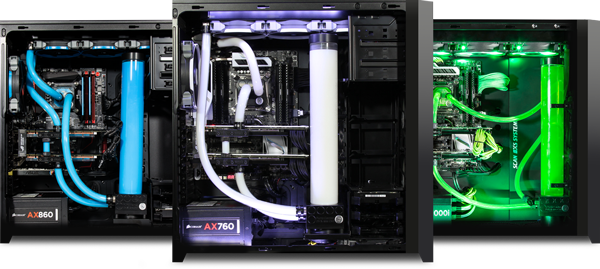 We most likely all have an entirely decent natural idea of what a diversion is. The general term "amusement" includes table games like chess and Monopoly, card diversions like poker and blackjack, club recreations like roulette and space machines, military war recreations, PC amusements, different sorts of play among youngsters, and the rundown goes on. In the scholarly world we now and again talk about diversion hypothesis, in which different specialists select methodologies and strategies so as to augment their additions inside the structure of an all around characterized set of amusement rules.
We most likely all have an entirely decent natural idea of what a diversion is. The general term "amusement" includes table games like chess and Monopoly, card diversions like poker and blackjack, club recreations like roulette and space machines, military war recreations, PC amusements, different sorts of play among youngsters, and the rundown goes on. In the scholarly world we now and again talk about diversion hypothesis, in which different specialists select methodologies and strategies so as to augment their additions inside the structure of an all around characterized set of amusement rules.At the point when utilized with regards to reassure or PC based stimulation, "diversion" for the most part summons pictures of a three-dimensional virtual world including a humanoid, creature or vehicle as the principle character under player control. (Or then again for the old geezers among us, maybe it infers pictures of two-dimensional works of art like Pong, Pac-Man, or Donkey Kong.) In his amazing book, A Theory of Fun for Game Design, Raph Koster characterizes an amusement to be an intelligent affair that furnishes the player with an undeniably difficult arrangement of examples which the individual in question learns and in the end aces. Koster's asser-tion is that the exercises of learning and acing are at the core of what we call "fun," similarly as a joke winds up interesting right now we "get it" by perceiving the example.
Most two-and three-dimensional computer games are instances of what PC researchers would call delicate ongoing intuitive specialist based PC reenactments. We should separate this expression so as to all the more likely comprehend what it implies. In most computer games, some subset of this present reality - or a fictional universe is demonstrated numerically with the goal that it tends to be controlled by a PC.
The model is an estimation to and an improvement of the real world (regardless of whether it's a nonexistent reality), since it is plainly unrealistic to incorporate everything about to the dimension of molecules or quarks. Consequently, the scientific model is a reproduction of the genuine or envisioned diversion world. Estimation and rearrangements are two of the amusement designer's most integral assets. At the point when utilized skillfully, even an enormously disentangled model can here and there be practically unclear from the real world and much increasingly fun.
An operator based recreation is one in which various unmistakable elements known as "specialists" collaborate. This fits the portrayal of most three-dimensional PC amusements great, where the operators are vehicles, characters, scr888 online,fireballs, control spots, etc. Given the specialist based nature of most amusements, it should not shock anyone that most recreations these days are actualized in an article arranged, or if nothing else freely object-based, programming language.
All intuitive computer games are transient reproductions, implying that the vir-tual diversion world model is dynamic-the condition of the amusement world changes after some time as the amusement's occasions and story unfurl. A computer game should likewise react to eccentric contributions from its human player(s)- in this way intuitive worldly reproductions. At last, most computer games present their accounts and react to player contribution to ongoing, making them intelligent constant reproductions.
One prominent special case is in the classification of turn-based diversions like electronic chess or non-continuous procedure amusements. Be that as it may, even these kinds of amusements normally give the client some type of continuous graphical UI.
What Is a Game Engine?
The expression "diversion motor" emerged in the mid-1990s in reference to first-individual shooter (FPS) recreations like the madly famous Doom by id Software. Fate was architected with a sensibly very much characterized detachment between its center programming segments, (for example, the three-dimensional illustrations rendering framework, the impact discovery framework or the sound framework) and the workmanship resources, amusement universes and principles of play that involved the player's gaming knowledge. The estimation of this division ended up apparent as designers started permitting diversions and retooling them into new items by making new craftsmanship, world formats, weapons, characters, vehicles and amusement rules with just negligible changes to the "motor" programming.
This denoted the introduction of the "mod network"- a gathering of individual gamers and little autonomous studios that constructed new amusements by adjusting existing diversions, utilizing free toolboxs master vided by the first engineers. Towards the finish of the 1990s, a few amusements like Quake III Arena and Unreal were structured with reuse and "modding" at the top of the priority list. Motors were made profoundly adjustable by means of scripting dialects like id's Quake C, and motor permitting started to be a practical auxiliary income stream for the designers who made them.
Today, amusement designers can permit a diversion motor and reuse noteworthy parts of its key programming segments so as to construct recreations. While this training still includes significant interest in custom programming designing, it very well may be substantially more conservative than building up the majority of the center motor parts in-house. The line between a diversion and its motor is frequently foggy.
A few motors make a sensibly clear refinement, while others make no endeavor to isolate the two. In one diversion, the rendering code may "know" specifi-cally how to draw an orc. In another diversion, the rendering motor may give universally useful material and shading offices, and "orc-ness" may be characterized altogether in information. No studio makes a splendidly clear partition between the diversion and the motor, which is reasonable thinking about that the meanings of these two segments frequently move as the amusement's structure sets.
Ostensibly an information driven design is the thing that separates a diversion motor from a bit of programming that is an amusement yet not a motor. At the point when a diversion contains hard-coded rationale or amusement manages, or utilizes extraordinary case code to render explicit sorts of amusement objects, it winds up troublesome or difficult to reuse that product to make an alternate amusement. We ought to presumably hold the expression "amusement motor" for programming that is extensible and can be utilized as the establishment for various diversions without real alteration.
Obviously this is certainly not a high contrast refinement. We can think about an extent of reusability onto which each motor falls. One would believe that a diversion motor could be something much the same as Apple QuickTime or Microsoft Windows Media Player-a broadly useful bit of programming fit for playing for all intents and purposes any amusement content possible. Be that as it may, this perfect has not yet been accomplished (and may never be).
Most diversion motors are cautiously created and adjusted to run a specific amusement on a specific equipment stage. Furthermore, even the most broadly useful multiplatform motors are actually reasonable for structure recreations in a single specific class, for example, first-individual shooters or dashing diversions. It's sheltered to state that the more broadly useful an amusement motor or middleware segment is, the less ideal it is for running a specific diversion on a specific stage.
This wonder happens on the grounds that planning any effective bit of programming perpetually involves making exchange offs, and those exchange offs depend on presumptions about how the product will be utilized as well as about the objective equipment on which it will run. For instance, a rendering motor that was intended to deal with private indoor conditions most likely won't be truly adept at rendering immense open air situations.
The indoor motor may utilize a parallel space dividing (BSP) tree or gateway framework to guarantee that no geometry is drawn that is being blocked by dividers or articles that are nearer to the camera. The outside motor, then again, might utilize a less-careful impediment system, or none by any stretch of the imagination, yet it likely makes forceful utilization of dimension of-detail (LOD) procedures to guarantee that far off articles are rendered with a base number of triangles, while utilizing high-goals triangle networks for geome-attempt that is near the camera.
The appearance of ever-quicker PC equipment and particular designs cards, alongside perpetually productive rendering calculations and information structures, is starting to diminish the contrasts between the illustrations motors of various kinds. It is presently conceivable to utilize a first-individual shooter motor to construct a continuous technique diversion, for instance. Be that as it may, the exchange off among consensus optimality still exists. A diversion can generally be made increasingly amazing by adjusting the motor to the particular prerequisites and limitations of a specific amusement and additionally equipment stage.



No comments:
Post a Comment